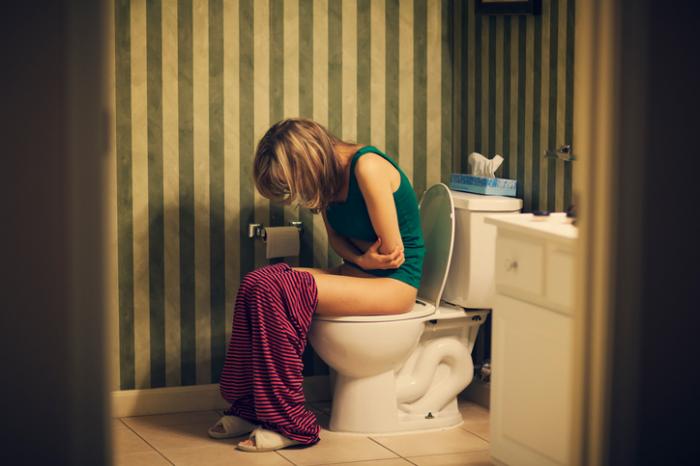A bladder infection is a bacterial infection of the bladder. People sometimes call it a urinary tract infection. It can cause pain and burning when urinating, a frequent need to urinate, and other symptoms.
Bladder infections are much more common in females than in males. It is estimated that about
The term “uncomplicated” is used to describe infections that occur in healthy people as opposed to “complicated” bladder infections that happen to people with other conditions, such as catheters, urinary stents, diabetes, pregnancy, or other causes.
Although an uncomplicated bladder infection is often easily treated with a short course of antibiotics, it can be considerably uncomfortable for the person who has it.
A note about sex and gender
Sex and gender exist on spectrums. This article will use the terms “male,” “female,” or both to refer to sex assigned at birth. Click here to learn more.

Getty Images
Bladder infections often occur when bacteria get into the urethra, the tube that carries urine out of the body, and then move into the bladder.
Once in the bladder, the bacteria can stick to the lining of the bladder, causing inflammation, a condition known as cystitis. The bacteria can also move from the bladder into the kidneys, resulting in a kidney infection.
Bladder infections can affect everyone, but according to research, adult women are
Because females’ urethrae are closer to their rectum than males’ are, there is a shorter distance for bacteria to travel and cause infection.
Males can be at a higher risk for bladder infections as they age. According to
Other
- sexual intercourse
- age
- using a spermicide for birth control
- not urinating immediately after sexual intercourse
- changes in the bacteria in the vagina
- having a bladder or kidney infection within the past 12 months
- changes in the urinary system
- menopause
- pregnancy
The symptoms of a bladder infection can
- pain or burning when urinating
- urgent and frequent need to urinate, often passing small quantities of urine
- discomfort in the lower abdomen
- strong-smelling urine
- cloudy urine
- blood in the urine
People with kidney infections have similar
A doctor can usually diagnose a bladder infection after discussing the symptoms a person is experiencing and performing a urinalysis. This is a urine test that looks for the presence of white blood cells in the urine, and signs of inflammation, which indicate an infection.
If a kidney infection is suspected, the doctor may recommend a urine culture. A urine culture is a laboratory test a doctor uses to identify the different bacteria that may be present in a urine sample.
Urine cultures are often recommended if the person:
- experiences symptoms that are not typical of a bladder infection
- gets frequent bladder infections
- has “resistant” bladder infections that do not improve with antibiotics
- does not begin to feel better within 24–48 hours after starting antibiotics
- is pregnant
If a person regularly gets bladder infections, the best way to get information on preventing bladder infections is to talk with a doctor.
The
Certain lifestyle changes, such as hygiene habits and switching birth control methods may also help in the prevention of bladder infections.

Getty Images
Doctors usually treat people with uncomplicated bladder infections with a short course of antibiotics. Treatment options vary, but the following are the
- trimethoprim sulfamethoxazole (Bactrim)
- ciprofloxacin
- ampicillin
Commonly, doctors prescribe these drugs to be taken in 3–7 day courses. A 3-day course of treatment has been found to be as efficient as a 7-day course of treatment and people experienced fewer side effects.
Side effects usually stem from an overgrowth of yeast, which can cause a rash and yeast vaginitis. The 3-day course is also more cost-efficient than the 7-day regime.
Single-dose treatment is also available, but it generally results in lower cure rates and more frequent recurrences.
Most people find that their symptoms begin to improve the day after beginning treatment. Even if someone feels better, they must take their full course of antibiotics to completely eliminate the infection. If they do not finish the whole course of treatment, the infection may return, and it can be harder to treat the second time around.
If symptoms persist for more than 2 or 3 days after starting the treatment, people should contact a doctor.
People with more complicated bladder infections will usually need to take antibiotics for 7–14 days. Complicated infections include those that occur during pregnancy, or in people who have diabetes or a mild kidney infection. Doctors also recommend that males with acute urinary infections take antibiotics for 7–14 days.
Less commonly, doctors use fluoroquinolones and beta-lactam antibiotics to treat more invasive infections. These antibiotics are effective, but doctors do not recommend them for initial treatment because of concerns about bacterial resistance.
Given the worrying problem of antibiotic-resistant bacteria, doctors try to encourage females who experience regular bladder infections to use
- Changing their method of birth control: Bladder infections appear to be more common in females who use spermicides and a diaphragm.
- Staying hydrated and urinating directly after sexual intercourse: This may help wash out any bacteria that enter the bladder.
- Topically applying estradiol cream if postmenopausal: Postmenopausal females may benefit from using vaginal estrogen to reduce the risk of infection.
- Using a preventive antibiotic: Doctors may recommend this if someone repeatedly develops bladder infections and has not responded to other preventive measures.
People may also help prevent bladder infections by including unsweetened cranberry juice, D-mannose, apple cider vinegar, ascorbic acid (vitamin C), and probiotics into their diets. Of these remedies, cranberry products and D-mannose appear to be the most popular.
Cranberry juice

Getty Images
Medical professionals
The recommended dose is three glasses of unsweetened cranberry juice daily, or two tablets daily until the infection subsides.
D-mannose
D-mannose is a naturally occurring sugar found in certain fruits, such as cranberries and blueberries. A
The sugar attaches to E. coli bacteria present and prevents them from sticking to the walls of the urinary tract or bladder. The bacteria are then flushed out upon urination.
D-mannose is available in powder or capsule form. The recommended dose is 500 milligrams taken every 2 hours for 5 days. People who experience recurrent bladder infections could take a lower daily dose of D-mannose as a preventive measure.
Doctors mainly treat uncomplicated bladder infections with a short course of antibiotics. This treatment is highly effective, inexpensive, and most people tolerate it well. Typically, symptoms start to improve after 48 hours and often resolve within 72 hours.
For people whose infection has spread to the kidneys, antibiotics are usually administered for 10–14 days. After this time, most infections get better without any further complications.
